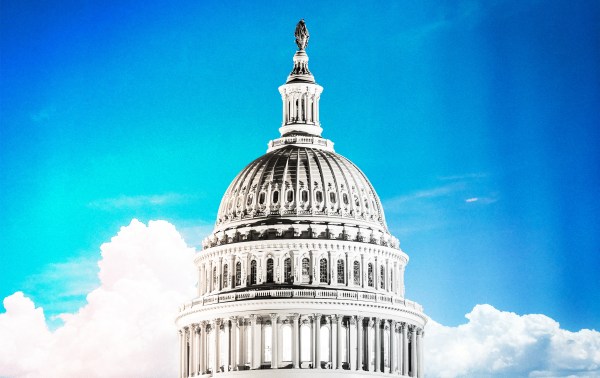Christian music groups like DC Talk and the Newsboys provided the soundtrack to much of my early life, as they did for lots of Christians who grew up in the 1990s and early 2000s. So Michael Tait, who helped found DC Talk and later moved on to front the Newsboys, has produced some of the most heard (and especially in his DC Talk days, best regarded) contemporary Christian music of the last three decades.
But he’s recently admitted to leading a “double life” after allegations of drug abuse, alcohol abuse, and sexual abuse surfaced earlier this year.
As Dispatch contributing writer Karen Swallow Prior points out today, Tait is not the first acclaimed artist whose behavior betrays his work. And though questions about his art pale in comparison to the harm he inflicted on his victims, where does all this leave those of us who have enjoyed and benefited from his work? There are few easy answers, Karen writes, but the answers we do have can be found by asking the right questions.
Karen Swallow Prior: What Do We Do With Art Made by Immoral Artists?

How much can we separate art from the artist? Can we value art created by artists who live deeply immoral lives or hold objectionable views? Can we enjoy art when we learn the artist has harmed others through the process of making his art? Should we?
As someone who has committed a lifetime to enjoying and teaching art in various modes and from across the ages, these are questions—good questions, sometimes hard questions—that I’ve grappled with in my own study as well as in conversation with others over the years.
Superficial, merely political responses to such questions abound on both the left and right. Many among the generation that grew up reading Harry Potter books, for example, no longer want anything to do with the work of the series’ author, J.K. Rowling, because of her public stances against transgender ideology. On the other side of the political spectrum, the U.S. Naval Academy removed hundreds of titles from its library shelves this spring during a purge of DEI influences (but returned many of them following a public outcry).
But knee-jerk censoriousness rooted in politics is not the same as honest grappling by the thoughtful reader, viewer, or listener. Every conscientious person must consider these kinds of questions at some point. I think, for example, of my beloved Charles Dickens, whose cruel treatment of his wife has been revealed in recent years to be even more abusive than previously known (more on Dickens later).
As a Christian, I want to consider these questions through the lens of robust religious commitment and a love of both art and artists. Several principles derived from Christian doctrine can help approach these issues: a recognition of the inherent worthiness of art itself, the reality of sin in the world and in all people, the work of the Holy Spirit in guiding the individual conscience, and the role of community in shaping artistic talent and in forming tastes—and thereby cultivating art, be it good or bad.
Christianity teaches that God is a creator and that human beings are created in his image, and therefore humans are created to be creators. We may create imperfect things as imperfect artists, but because humans imitate God merely by creating, art itself has inherent value because its making reflects God’s own act of making. This means works of art can be judged and appreciated for the objects they are, apart from the person of the artist. The beauty of a painting, the resonance of a musical score, and the craft of a literary text require assessment and invite enjoyment. A work of art can be judged, in part, by its objective quality, by the way it meets (or fails to meet) standards of excellence and skill. One can walk into a museum or stumble across a musician playing in the park and assess the art apart from any knowledge of the artist.
Nevertheless, just as the world God created reflects the one who made it (“natural revelation,” in theological terms), so too the works humans create reflect the artists who made them. The correspondence between art and artist is more obvious and straightforward in some cases than in others. A work of literature, for example, can more directly articulate the worldview and values of the writer than instrumental music is likely to do. Even though we can judge a work of art on its own terms, there is always something of the maker in the made thing. I can enjoy the songs by Fleetwood Mac about broken love and not be surprised that the lives of the band members reflect the ethos of their work. The Marquis de Sade—from whom we’ve derived the terms sadist and sadism—committed acts of violence and torture and wrote about them. George Herbert was a country parson in the Church of England who wrote devotional poetry to God and for the church. Not all artists create art that so purely reflects the state of their souls, but many do. In such cases, the life of the artist renders the most just judgment of their art.
But most relationships between art and artist are more complicated.
Of course, every artist is fallen and sins. We cannot expect artists to be pure saints. On the other hand, some sins do far more harm in this world than other sins. Is the emotional and educational neglect of his daughters by 17th-century poet John Milton as morally egregious as the alleged physical abuse by Ted Hughes of his wife and fellow modern poet Sylvia Plath? The greater depravity of the latter mars the work of the artist—as well as the artist himself—more deeply.
The purpose of the art comes into play, too. In Christian terms, this purpose would be referred to by the Greek word telos, meaning an ultimate end or goal. Charles Dickens was not dispensing marriage or family advice: He was writing literary works that shone a light on many of the ills and sins of his age while at the same time celebrating human goodness where it could be found. He accomplishes this end magnificently. I will, of course, always look slantwise at his depiction of women and wives—but all art should be viewed askance to a certain degree, and those degrees will differ.
The novelist George Eliot, who was actually Mary Anne Evans writing under a male pen name, rejected the Christianity of her upbringing, became agnostic, and lived in a conjugal relationship with an already-married man. Eliot’s work aims to critique humorously and humanely much of the cultural Christianity of Victorian England. Eliot achieves that end with tremendous insight and compassion. She lived her life as an honest critic of Christianity and many Christian mores. Her art reflects that life and is a gift to readers—even Christian ones—because there is much truth in her criticism and much goodness and beauty in her art. She portrays the lives of clergymen and their congregants with warmth and empathy, failures and all, in Scenes from Clerical Life. One of Eliot’s most famous passages, describing the disappointing but honorable outcome of the life of the heroine of the novel Middlemarch, accords with the humble life extolled by the Apostle Paul:
But the effect of her being on those around her was incalculably diffusive: for the growing good of the world is partly dependent on unhistoric acts; and that things are not so ill with you and me as they might have been, is half owing to the number who lived faithfully a hidden life, and rest in unvisited tombs.
Flannery O’Connor, the writer of Southern Gothic fiction, is a favorite of mine. In recent years, she has been canceled and called out for her own racism and for the racist tropes in some of her stories. Yet, O’Connor’s purpose—which can be seen by the careful reader—is to challenge the standards of her time and place, and that includes interrogating her own assumptions and biases. While supporting integration as public policy, she admitted her own personal racist leanings and sought to resist them. She may not have gotten as far half a century ago as she might have in this century, but she was on that trajectory—and far ahead of her time. The telos of her art matters to understanding and judging it.
In this way, O’Connor contrasts with filmmaker Roman Polanski, who didn’t examine sin to reject it but rather, seemingly, to indulge in it. Polanski created a stunning film adaptation of Thomas Hardy’s novel Tess of the D’Urbervilles, a story centering on the tragic outcome for an innocent girl who is sexually assaulted. Hardy’s work is a severe indictment of a society that would turn away from such a person. But I can no longer watch Polanski’s adaptation the way I once did, knowing now that he pleaded guilty to statutory rape after being arrested for drugging and raping a 13-year-old girl and fled the country to escape the consequences. Hardy’s art decried the sort of heinous act Polanski committed. The two artists are not the same.
And here is where the Christian can be guided by individual conscience and the Holy Spirit. I have trouble with Polanski now not as a survivor of sexual assault, but as an advocate for such survivors. The Bible says in James 4:17, “If anyone, then, knows the good they ought to do and doesn’t do it, it is sin for them.” Objectively, the film is beautifully rendered, but with the knowledge of Polanski’s actions in his own life, it does not seem good to support his work when it is so closely connected to such actions. Art does indeed imitate life, and each of us, whether by nature or experience, is more attuned to certain aspects of life than others.
As a literary and cultural critic, I appreciate and enjoy works of art that are dark, intense, and complex, more than many people do. Such works do not cause me to stumble, but sharpen my thinking, deepen my understanding, and expand my empathy. But I don’t demand that others subject themselves to the same types of art. (And I ask in return that they not invite me to watch the latest chick flick.)
Our tastes are formed by experience, learning, and community—and for the Christian that includes the community of the church, which has a role (whether intentionally embraced or not) in shaping our tastes and forming our standards. I’ve written extensively on the malformation in the contemporary church of an appetite for sentimentality, for example. And we ought also to indict the larger culture for its pornification of much art that isn’t “technically” porn but really is.
But the church community plays a much bigger role in forming our tastes and cultivating the art we consume than many of us think. I’m referring to the role played by the publishing, music, and celebrity industries that create and promote the art and artists filling our churches, bookstores, streaming services, and podcasts. At its best, this is just Christian capitalism doing what it does. But its more sinister side appeared—once again—with recent news about longtime Christian music artist Michael Tait, who has been credibly accused by multiple victims of sexual assault, unwanted sexual advances, and drug abuse. And all this was considered for years the “worst kept secret” in the business, a secret apparently kept by countless people inside (and outside) the Christian music industry who directly or indirectly benefited from Tait’s commercial success.
What do you do when an artist who has acquired fame and fortune proclaiming one set of beliefs and values lives a double life rooted in the opposite? It seems to me that such art loses its savor and is something to spit out rather than enjoy.
Here is where the questions about the relationship between the art and the artist transcend questions centered on the individual work and the decisions of individual audience members. Here is where the community plays a role in either holding artists accountable—or covering up their wrongs. Here is where the community cultivates art that is truly good, true, and beautiful—or merely a cash cow. Here is where the church should be a community of values more transcendent than crass commercialism.
When an artist produces work rooted in his or her professed faith and is supported by that faith community and then betrays those beliefs, more issues come into play than simply the objective quality of the work. The spiritual condition of the artist matters. The welfare of victims matters. The systems and structures that supported the artist are implicated if those systems and structures enabled or covered up wrongdoing. What do we do when works of art and the artists who create them destroy the very things they claim to profess and express?
I think that as far as it depends on us, we seek art elsewhere. And we take our time, attention, and dollars with us. The question isn’t merely about separating the art from the artist. It’s also about separating ourselves from works that are not good, true, and beautiful.
Quick Questions With Warren Cole Smith
This week, the IRS asked a federal court to sign off on a new understanding of what political messaging churches and houses of worship can engage in, including endorsements of political candidates.
For decades, the so-called Johnson Amendment has restricted churches and nonprofits from making political endorsements or else lose their tax-exempt status, but some conservatives and churches have long sought to get rid of the rule. Though the petition from the IRS—filed as part of an ongoing lawsuit filed by two Texas churches and a group called the National Religious Broadcasters—applies to houses of worship, many Christian nonprofits classify themselves as churches with the IRS, which allows them to avoid filing public tax documents known as Form 990s.
To get his take on the ramifications of the would-be rule, I sent a few questions to my friend Warren Cole Smith, president of MinistryWatch and a veteran investigative journalist who’s covered churches and Christian ministries. My questions to him are in bold.
Generally speaking, how seriously do you think nonprofits, ministries, and churches took the Johnson Amendment before this week’s IRS rule change?
It is certainly true that the vast majority of them did not violate the Johnson Amendment, but it is not clear if the law was a factor. Most Christian organizations, even conservative ones, understood that their primary mission was not politics, but the gospel. For these organizations, the Johnson Amendment had no impact on them. In some ways, the Johnson Amendment provided a guardrail for churches. It made it easy to focus on the unchanging truth of the gospel and not on the ebb and flow of political events. I am not a fan of the government telling churches or ministries what to do, but the Johnson Amendment was a gift to the church, and we will rue the day this rule changed.
A lot of media coverage focuses on whether pastors will be making political endorsements from their pulpits. But the National Religious Broadcasters were part of the group that sued to get the rules changed. So, what other ministries and organizations might we see more change in?
It seems certain that media ministries will push harder in the direction of political advocacy. It will also make it easier for the NRB and its members—mostly Christian radio, television, and digital ministries—to be more open in their political and issues advocacy. The NRB has long had ties to the Republican Party, and with Donald Trump in particular. This will likely bring that advocacy out of the shadows and make it more explicit and overt.
You have spent years covering and investigating Christian ministries and churches. Do you think this will fundamentally change their approach to politics?
There is not a “one answer fits all” to this question. For some, this rule change will unleash them to do what they want to do, which is to become much more politically active. For others, this rule change will make it harder to resist a minority of their members, or donors, who want their leaders to be more politically active. I also fear that we will see a new class of Christian “ministries” emerge. This class will be made up of groups whose primary mission is political advocacy, but who camouflage their political activism beneath a thin Christian-ish veneer.
Is the rule change a good thing or a bad thing for transparency among churches and ministries?
It is too early to tell, but “churches” and “associations of churches” do not file Form 990s, which is an important disclosure and accountability document. If political advocacy groups claim the “church” exemption to avoid disclosure requirements, it will be a bad thing.
Do you anticipate this affecting the public’s perceptions or trust of religious institutions?
Far too many people already believe—and with good cause—that some churches and ministries are mere disguises for political activism. If this development reinforces that belief, it will have a negative impact on the legitimate gospel work of Christian ministries.
Does the media make too much of these issues?
There is no doubt that the media have sensationalized and highlighted the political activism of some Christian ministries. The media’s role as “conflict entrepreneurs” has eroded trust in the church, in Christian ministries, and in the positive role that Christianity has played in civil society. This country needs the church, but both the church and the country need the church to be the church. The country needs the moral and ethical voice of the church, and it needs what only a truly biblical and gospel-centered church can bring.
The philosopher Jacques Ellul spoke of “the political illusion” that our problems are political, and the solution to our problems can be brought about by political means. This new ruling makes it far too easy for the church to further succumb to this political illusion and far too easy for the media and the church itself to blur the line between political activism and the true mission of the church, which is not to bring political solutions, but to bring the transforming grace of God—the gospel—to a broken world.
More Sunday Reads
- Speaking of that IRS decision, for Christianity Today, Daniel Silliman unpacked how it “now says that, actually, nothing that happens at church or through a church’s ‘usual channels of communication on matters of faith’ can violate the Johnson Amendment. Even a sermon that explicitly tells people in the pews how to vote does not ‘participate’ or ‘intervene’ in a campaign, according to the IRS, at least not ‘within the ordinary meaning of those words.’ The agency wants the court to settle a lawsuit brought by the National Religious Broadcasters and two evangelical churches in East Texas. The court filing, which was first reported by The New York Times, also notches a political victory for conservative Christians who have long opposed the Johnson Amendment.”
- Faith-based summer camps play a critical role for many American youngsters. This month’s deadly and tragic floods in Texas shine a spotlight on summertime sleepaways as places to make lifelong friends and fun memories. For the Associated Press, Giovanna Dell’Orto and Miriam Fam write on both the Camp Mystic disaster and the overall impact faith-based summer retreats have on many lives. “After the floodwaters rampaged through Camp Mystic, authorities and families have been combing through the wreckage strewed between the cabins and the riverbank,” they write. “On Sunday, a man there carried a wood sign similar to those seen hanging outside the door of several buildings. It read: ‘Do Good. Do No Harm. Keep Falling In Love With Jesus.’ For generations, these Texas campers have been challenged to master quintessential summer activities from crafts to swimming while also growing in spiritual practices. Campers and counselors shared devotionals after breakfast, before bed and on Sunday mornings along the banks of the Guadalupe River, according to Camp Mystic’s brochure and website. They sang songs, listened to Scripture and attended Bible studies, too.”
- Sen. Mike Lee of Utah is the most powerful Latter-day Saint politician in the country. But his trollish posts on social media often cuts against his church’s sensibilities for behavior in the public square. For Politico, Samuel Benson (an occasional Dispatch contributor) wrote about the brewing conflict. “Regardless of political affiliation, the church is calling on its members to be on the frontlines of finding common ground,” he wrote. “It has arguably become the central message of [Russell M.] Nelson’s tenure as the church’s president.* Lee, both as a keyboard warrior and flesh-and-bones legislator, is consistently getting in the way. For the first time in recent memory, the church has a high-ranking member in Washington not just failing to cooperate on some of its key priorities, but sometimes actively impeding them. While larger, more established faiths may not pay much heed to the antics of a single member, Latter-day Saints have a different challenge: They make up just two percent of the national population, and nearly half of Americans say they don’t know a single church member. The actions and reputation of the church’s faithful in public spaces—Congress, perhaps, being the most influential—plays a significant role in the public’s perception of the church itself.”
Religion in an Image

Correction, July 13, 2025: This newsletter has been updated to correct the first name of the president of the Church of Latter-day Saints.










Please note that we at The Dispatch hold ourselves, our work, and our commenters to a higher standard than other places on the internet. We welcome comments that foster genuine debate or discussion—including comments critical of us or our work—but responses that include ad hominem attacks on fellow Dispatch members or are intended to stoke fear and anger may be moderated.
With your membership, you only have the ability to comment on The Morning Dispatch articles. Consider upgrading to join the conversation everywhere.